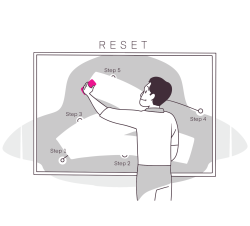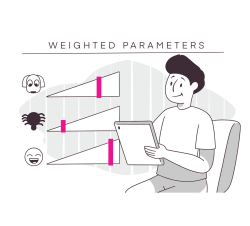Tuning algoritmic parameters
Tuning algoritmic parameters might be offering a more direct, and for XAI a more vital approach, over parameters within the algorithm. The most straightforward solution is to enable them to open or close certain data sources as input for the algorithm. This solution was applied in our design project about recommender systems that adhere to public values conducted by several student groups. We were, however, unable to locate an example in a commercial system or a proposal in academic literature. A related idea is to allow users to change weights to elements of the decision-making algorithm such as data sources or intermediate variables included in the modelling. This is implemented in the legal search engine ‘Fastcase’ and it has been proposed by academics as well (e.g. [1]). Nascent studies suggest that such controls are appreciated by users. For example, Jin et al. [2] have tried to add algorithmic controls for music recommendation. They let users control the weight of six characteristics: mood, location, weather, social aspects, current activity, and time of day. This control increased perceived recommendation quality without increasing cognitive load. Users also liked to play with the system.
There are also proposals in the literature to make the full complexity of an algorithm controllable for the user. For example, Gretarsson et al. [3] enable users to adjust decision paths. They built a recommender in which users can adjust the decision process in each of its layer. This solution gives users full control over the algorithm and allows them to explore the decision-making process in greater detail. However, it may not be feasible to apply this to all kinds of algorithms and in many cases the approach might be ‘too direct’. It is often not necessary to completely align users’ mental model with the technical implementation of the algorithm.
Proposals that allow users to tune algorithmic parameters seem to have great potential to achieve explainability of the algorithms involved, because they allow for a very direct manipulation of the algorithm and users can explore the influence on the output immediately; they are the most model intrinsic approach [4]. At the same time, the proposals that we found were still very explorative and ‘literal’ with regards to the inner workings of the algorithm. To implement this in a way that fits the task context, and the mental model of the user will be a challenge. To us it seems insufficient to just expose the inner working of the algorithm; instead, more direct user controls should bridge between them and the decision of the algorithm in a specific task context.











